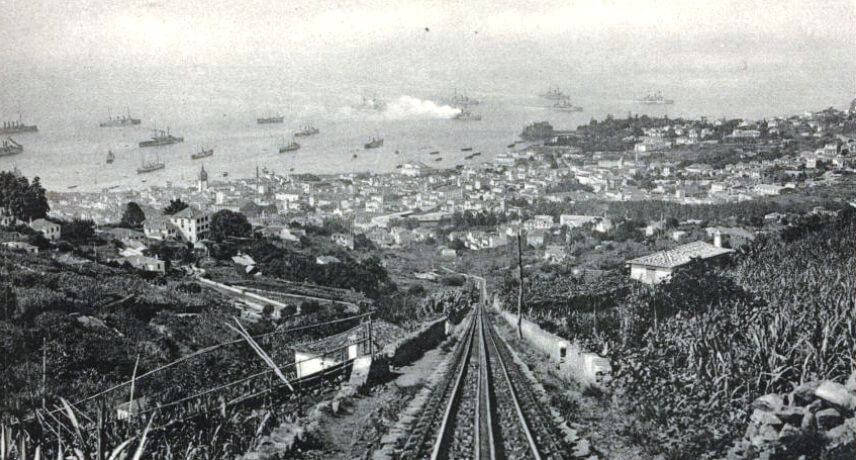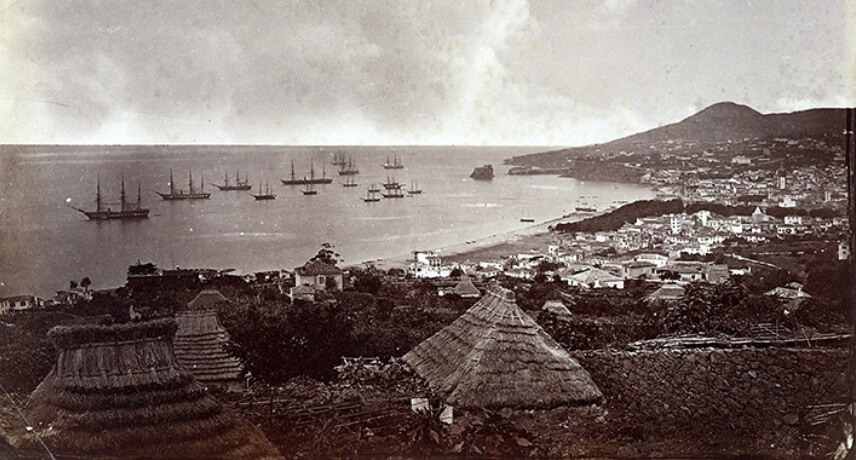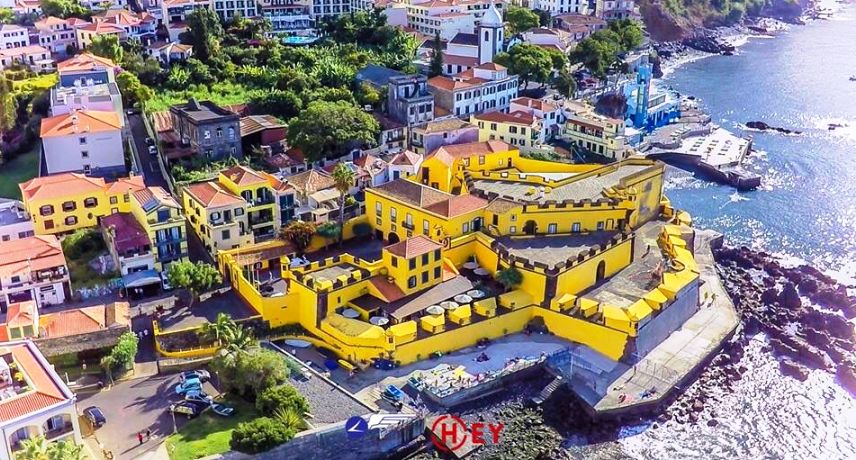Mon, 28 Oct 2019
The discovery of Madeira Island
Emerging from the Atlantic Ocean, on top of a volcano, on the African continental shelf, we see the island of Madeira on the horizon.
Before the Portuguese exploration, the islands would’ve already been known. They have been reported since ancient times. Classical authors such as Plutarch or Pliny the Elder refer to the Fortunate Islands, paradise islands where there is no winter, and place them in the Atlantic geographical space corresponding to that of the Madeira archipelago.
The island of Madeira first appeared on the Dulcert Portulano (map) in 1339, some 80 years before its official discovery.
The city of Funchal on the Atlantic stage
 Funchal view from Monte - Photo Credits: fotografiasmadeira.blogspot.com
Funchal view from Monte - Photo Credits: fotografiasmadeira.blogspot.com
An approach to the coast reveals among the mists a natural amphitheater in which the city of Funchal is located.
This city began to be populated in the year 1424, shortly after the Portuguese 'discovery' of the island in the year 1419.
The Madeira archipelago, namely the islands of Madeira and Porto Santo, have become of fundamental importance to the Portuguese expansionist effort in the Atlantic. They were the basis of support for the Atlantic trade routes and were also established as producers of their own wealth (for example as producers of wine or sugar).
The Treaty of Tordesillas, signed in 1494, essentially established the division of the world and the lands yet to be discovered between the Kingdom of Portugal and the Crown of Castile. This is the doctrine of the Mare Clausum that the kingdoms of the Iberian Peninsula wanted to establish over most of the Atlantic area. The remaining European nations would be excluded or would have a very small area of ??action.
The other European powers understandably shared a preference for the Mare Librum, the open sea, the ocean where everyone can sail at will.
Following this attempt at peninsular hegemony, the other European powers found themselves in a situation of marginality. This essentially translates into actions of privateering and piracy. The French, the English, and later, the Dutch patrolled the Atlantic and armed their admirals (see Drake's actions for the English crown).
Madeira Island soon became a center of commerce, thanks in first instance to sugar production, even surpassing other sugar producers such as Sicily. This prosperity attracted to the island genoese and flemish merchants, among others.
 Funchal 1860 - Photo Credits: Slideplayer
Funchal 1860 - Photo Credits: Slideplayer
This increase in traffic in the Atlantic islands attracts actions of privateering and piracy.
The most significant attack on the city of Funchal took place in October 1566 by the French military and privateer Pierre-Bertrand de Montluc. Montluc arrived in Funchal with three galleons and plundered the city, holding it hostage for 15 days, causing about 200 deaths and massive damage to the city worth 500 000 reais (in wine, sugar, slaves), and even made an assault on the Funchal Cathedral itself. The fact that the Cathedral was attacked so violently has led to speculation about the possible religious motives of Bertrand de Montluc, since he was a Huguenot, a French Protestant, and the Portuguese Kingdom was a power of Catholicism.
The French looting of the city revealed serious weaknesses in it’s defenses.
It is following it that the crown decides to take a series of measures in order to anticipate and prepare future attacks by pirates and privateers. In first place, artillery is installed on board vessels that transport goods (both to and from the island and to other points of the empire) and convoys are established, a kind of armed escort to merchant ships.
There is also a new impetus in defending the city. Mateus Fernandes is appointed master builder in order to expand a series of defensive structures in the city of Funchal. It is decided to build and upgrade fortresses to protect the port, the city and the population. There is, immediately, the reinforcement of the so-called old city wall, the expansion of São Filipe do Pico Castle in 1582 (now called São João Baptista do Pico Fortress), the reinforcement of São Lourenço Palace / Fortress, the construction of the Fort of St. James (1614-21).
 Fortress of São João Baptista do Pico by Karl Bryullov, 1850
Fortress of São João Baptista do Pico by Karl Bryullov, 1850
 Fort of St. James - Photo Credits: Augi de Freitas
Fort of St. James - Photo Credits: Augi de Freitas
Constant changes in European history also affect constantly the Atlantic Islands and Madeira and Funchal, especially, is no exception.
During the Iberian Unification (1580 to 1640) the assaults and attempts of assault by French privateers and pirates followed. There were also some attempts by Algerian pirates.
As the political situation changes and the independence of the Kingdom of Portugal is restored, so do the loyalties. Portugal has an alliance relationship with the Kingdom of England. This is also felt in the colonies of the Portuguese empire, namely in Madeira, where the English presence is quite pronounced (especially from the 18th to the 19th century).
In addition to an English community that was very present in Funchal, the city also served as an operational base for English privateers, despite Portugal's alleged neutrality with respect to certain conflicts (notably between the English and the French). Corsairs like Filipe Maré and Rei Jorge were headquartered in Funchal and were attacking as many enemy targets they managed on the Atlantic routes (usually French, Spanish and eventually Dutch). This action sometimes generated reprisals that were also felt against Portuguese targets (because of their collaborationism) and against the city of Funchal itself, as it happened in 1793, 1796, 1797 and 1798 with several French attacks.
The English even occupied the island between 1801-1802 and 1807-1814. The English position in Funchal was seen as fundamental to the control of Atlantic trade routes and as a way of attacking / controlling enemy routes through the privateering.
It is clear the influence that privateering and piracy had on the development of the city of Funchal, its prosperous port of commerce and the very geography of the city through the defensive buildings that we can still visit today.

